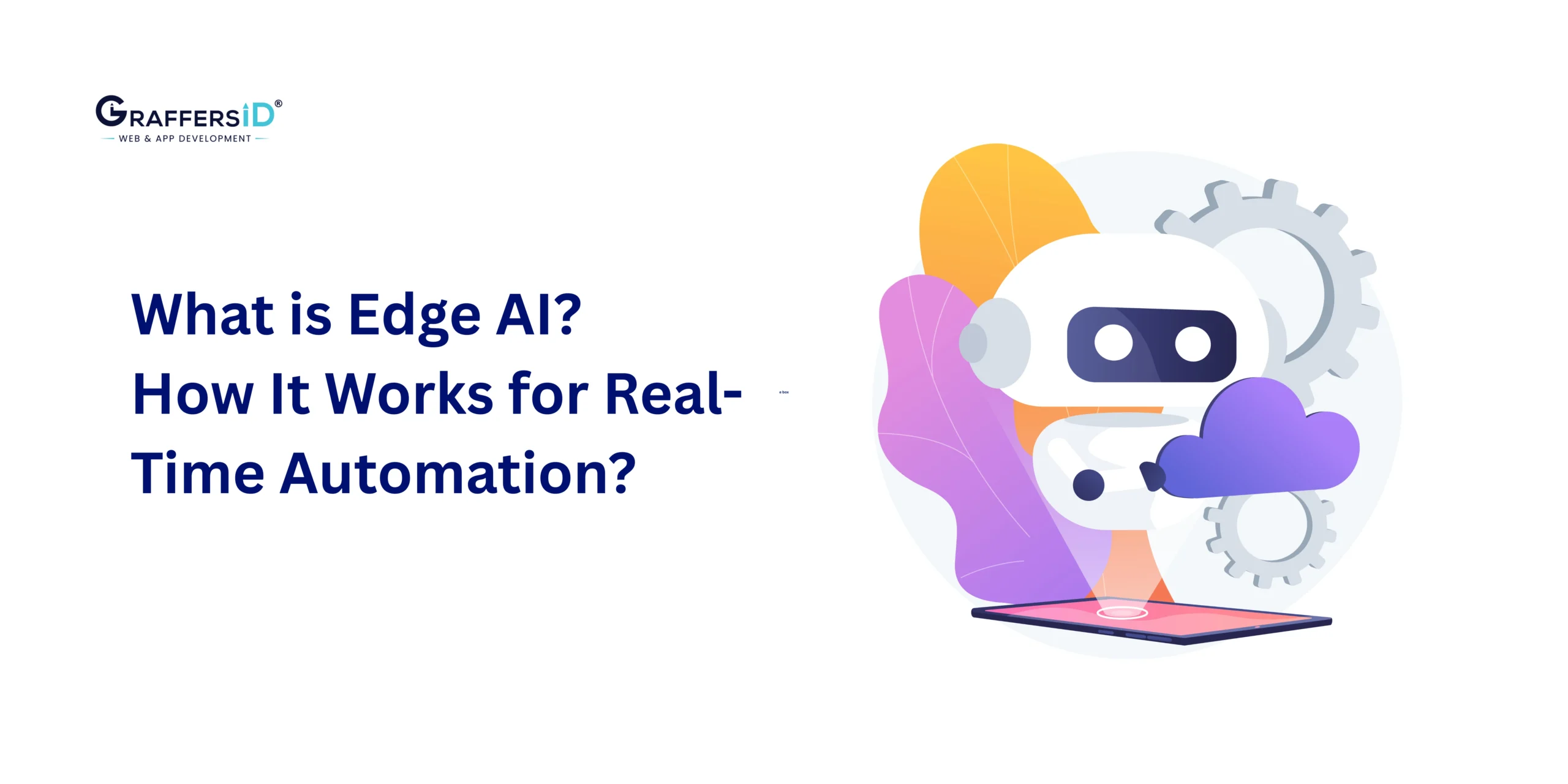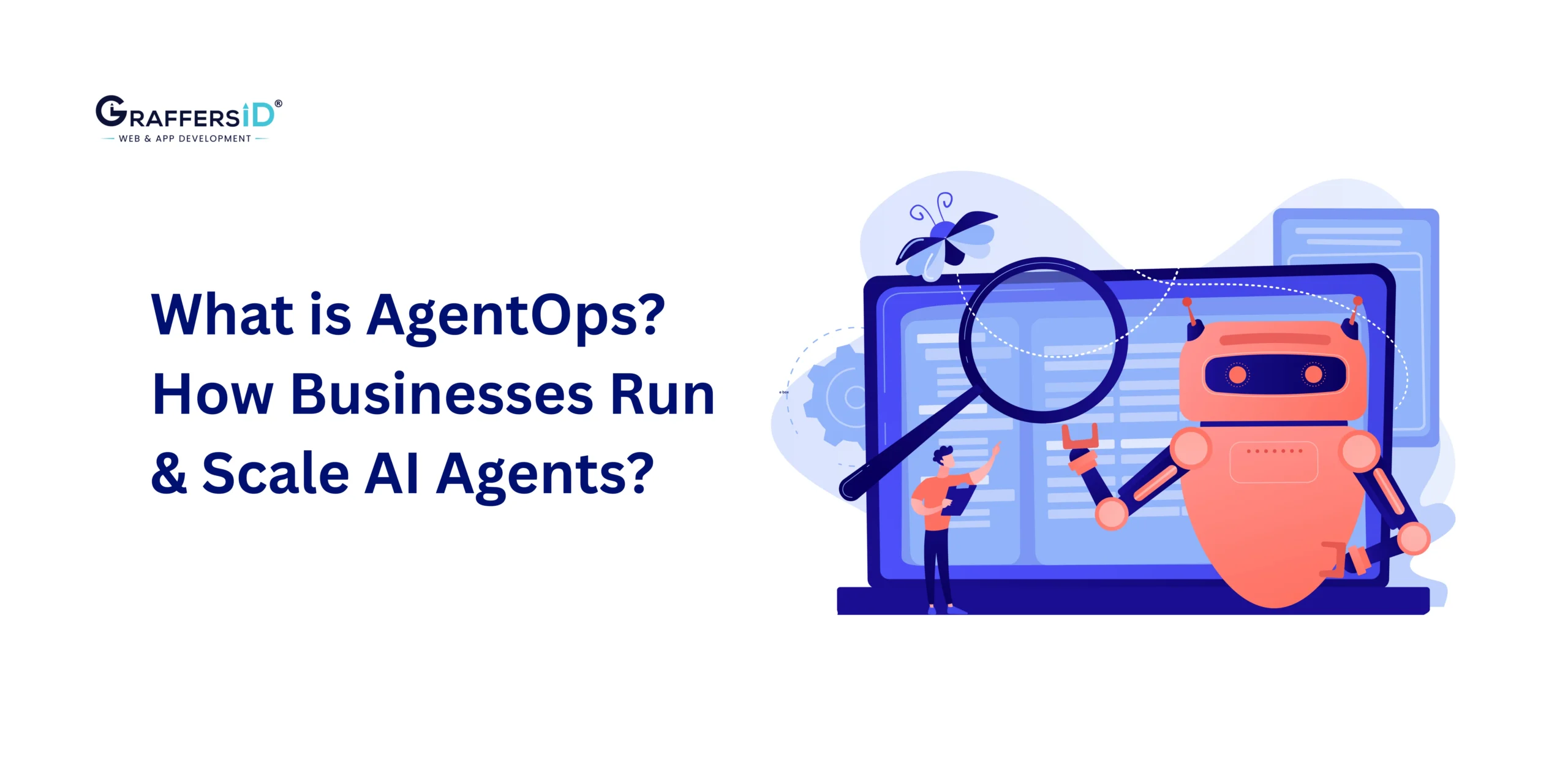Are you planning a full-stack development process? MERN stack development can offer you an edge over the competition and build attractive websites and applications that not only look good or are highly functional but can also offer a good user experience. So, when you hire MERN developers in the USA from India, here is a complete guide to what to consider and why hiring Indian developers is your best bet.
What Is MERN Stack Development?
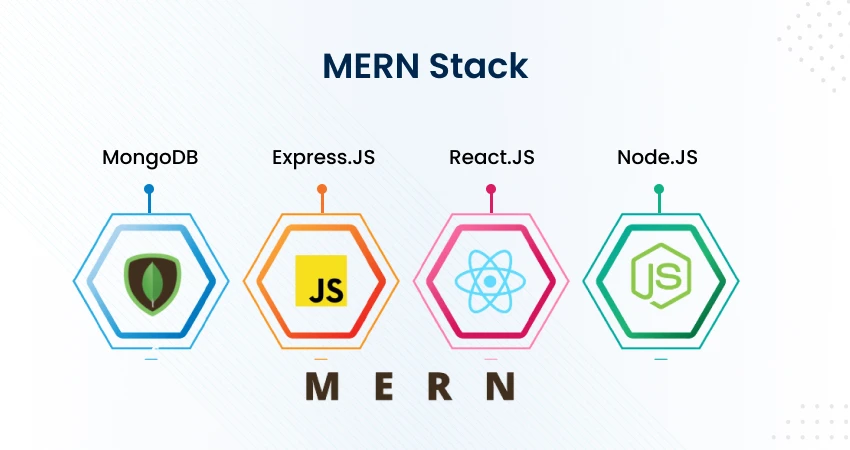
By combining technologies, the MERN stack allows you to develop applications faster. This technology is used all over the world, and the MERN stack is mainly used to create fully JavaScript-based applications. MERN stands for MongoDB, Express, React, and Node, which is based on the four critical technologies that make up the stack.
- MongoDB: Document Database
- Express.JS: Web Framework
- React.JS: Client-Side JavaScript Framework
- Node.JS: The First JavaScript Web Server
Because of Four Technologies based on JS, all four are included in the stack.
Therefore, if you are familiar with JavaScript (and JSON), you can operate the frontend, backend, and database independently or together.
What is a Stack?
In simpler terms, a stack is combining different technologies to reach a certain goal.
There are many types of stacks to choose from, and some are more popular than others due to their unique designs. The MERN stack is a common stack consisting of one or more of the following components:
- MongoDB
- Express.JS
- React.JS
- Node.JS
Components Of MERN Stack
Before we get into the depth of why you should hire MERN developers in USA, here’s an insight into the four main components of MERN and how it can help you and your developers create engaging and promising technologies.
1. MongoDB
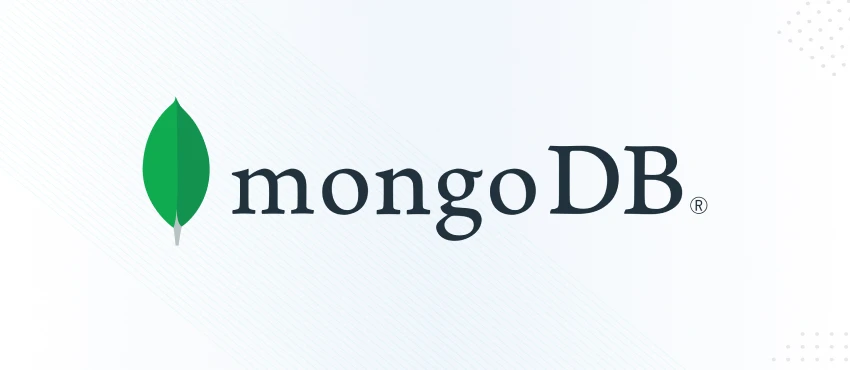
MongoDB is a cross-platform document database. Document databases like MongoDB store data in flexible documents and can be queried using a JSON-based query language. In order for the data structure to remain stable over time, documents must vary in size, number of fields, and content. Moreover, MongoDB is famous for its flexibility and scalability.
MongoDB Features
- Built-in Scalable Environments.
- Multiple MongoDB servers can run concurrently. Have a copy for security against hardware failure to keep the system in place.
- A master-slave replication mechanism is also applied. The framework maintains multiple copies of data using native applications.
- MapReduce is supported, as are flexible compositing tools.
- Because databases use JavaScript instead of procedures, MongoDB pairs very well with JavaScript.
Advantages of MongoDB
- Document indexing becomes very easy with this tool.
- Big data can be easily managed by distributing it across multiple machines. Therefore, scalability is essential.
- Schema-free files are files that contain both structured and unstructured data.
- MongoDB is quite simple to configure.
- You can quickly create documents with its flexible document model.
- Since MongoDB uses commodity hardware, costs are significantly reduced
2. Express.JS
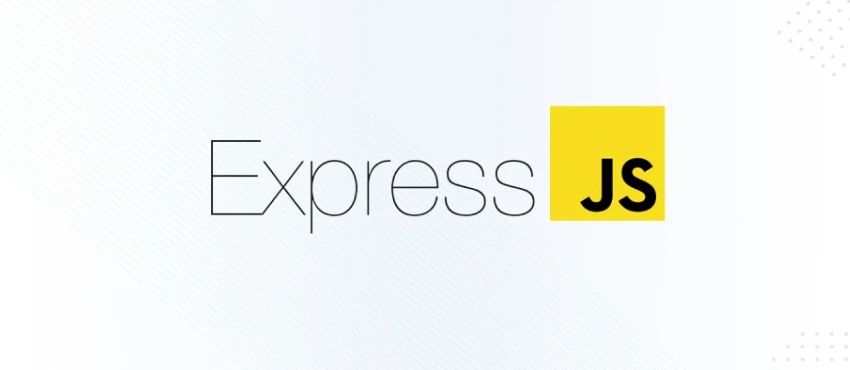
Another MERN component is ExpressJS, a Node.JS web application framework that simplifies writing server code on Node.js by reducing the need to develop Node.js code directly. You will have to repeat this code many times using the Node.js HTTP module.
Express is an open-source framework for building robust, easy-to-use APIs and web applications. Some additional features can be added as plugins. Many people love it for its fast speed and minimalistic structure.
Advantages of ExpressJS
- Single-threaded and asynchronous.
- High performance and scalability.
- Using an embedded router makes code reuse easier.
- Full API.
Features of Express.JS
- With Express.JS, developers can continue their projects smoothly and quickly. This is due to the easy configuration of Express.js.
- Express.JS complements Node.js well, so scalability is guaranteed. Developers can easily add a node.
- Express.JS offers great opportunities to use the same language for both back-end and front-end development. JavaScript is the language of choice for Express. JS.
- The non-blocking IO system is one of the main advantages of Node.JS. Therefore, Express.JS projects can be verified. The
- Express middleware is designed to support error detection in both synchronous and asynchronous modes.
- Express.JS does not have strict rules for handling certain operations.
- Express.JS supports the Google V8 engine with which the performance would be better.
- The cache function is a big advantage of Express.JS where you don’t have to run the code again and again.
3. React.JS
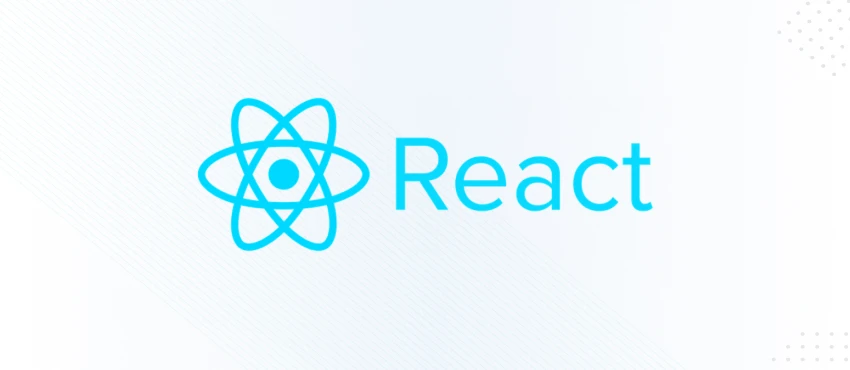
Thanks to React’s modularity, developers can break down their code into smaller units, maintain state, and then combine or encapsulate these segments to create complex user interfaces. React’s server-side rendering is also done using Node.
Feature Of React.JS
- An original DOM is reverted to an equivalent lightweight virtual DOM. The framework is lightweight and includes all original DOM properties.
- It supports one-way data binding. Control is therefore improved.
- JS React uses components at its core. To facilitate the transmission of data through the application, the code is written in templates.
Benefits of React.JS
- Besides a fast development process, it also improves the user experience.
- In the virtual DOM, only changed elements are displayed, which improves performance.
- Since this component creates a distribution matrix, local and global variables can be closely related.
- Unidirectional data flow improves code stability.
4. NodeJS
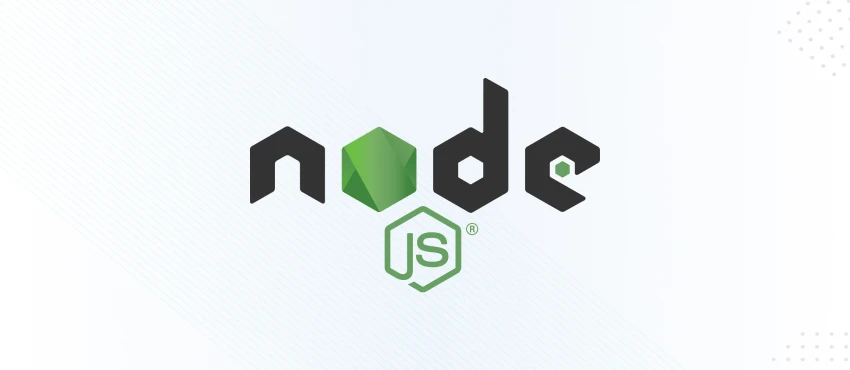
Node.js is a programming language for running JavaScript. Google started building Node.js for Chrome in 2008, and it’s recently become open-sourced. V8 is the JavaScript engine that supports it.
With Node.js, several JavaScript files can be assembled without an accompanying HTML page: a CommonJS-based module system is used instead.
Features of NodeJS
- Node.js library executes code very quickly using the V8 JavaScript engine included with Google Chrome.
- Node.js application never buffers data. The application sends the segmented data to the server.
- The Node.js library provides asynchronous APIs across all of its components.
Advantages of NodeJS
- The program is easy to use, open source, and user-friendly.
- Web applications and servers have the same code.
- With Node.js you can build powerful server-side applications.
- The JavaScript Runtime Environment Support Library is an open-source environment.
- Node.js has a fast code execution speed.
- It can grow especially well.
Read Also: MEAN Vs MERN Stack
What Are The Requirements For Hiring A MERN Stack Developer?
Usually, MERN stack developers are required to write testable, reusable, and efficient code threads to develop and design the front end, back end, and database for a website. In addition to this, the developers might also be required to apply certain CSS methods or tools to create highly engaging websites.
Before you hire remote MERN developers in the USA, You must understand their job profile, the skills needed, and the responsibilities they will be handling.
At the very least, a MERN stack developer should be highly proficient in the four components listed above. Meaning, the candidate must know how to use React on the client side and Node.JS on the server side.
-
Responsibilities
As stated above, MERN developers would be required to write code for website development. Besides this, they will also be required to translate wireframes and PSD design elements into highly functional web apps. They must also ideate a proper software development process with the designing and development team.
-
Skills
Because the developers will be required to bind UI elements to JavaScript object models, they must be highly proficient in Node.JS, Express.JS, and Restify. Besides this, they must also have strong problem-solving and analytical skills.
Why Should A Company Hire A MERN Stack Developer?

MERN stack development is all about full-stack development. In short, hiring a person who can do everything, including the backend, frontend, and database, can not only save your cost but can also lead to a faster development process.
Here are some of the reasons why you should hire remote MERN stack developers in the USA:
-
A Highly Versatile Development Process
MERN stack developers know the technical requirements of the business, allowing them to deliver better solutions than any other web developer.
The ability to manage frontend and backend development is useful in many ways, especially when working on a tight budget. They can simplify and deliver faster by controlling the server-side and client-side of the website or application.
-
Full-Stack Development
When you hire MERN developers in the USA from India, you can leverage their stack of skills and extensive industry experience to follow a full-stack development process. These professionals will have a 360-degree perspective of developing every component of the website, including the front end, back end, and database.
Following a full-stack development process will make the development process easy and fast and allow companies to cut down their expenses of hiring several developers for a single job.
-
High Skills
Because a MERN stack developer will be highly skilled in developing every component of the website, they’ll indeed have a wide plethora of skills, giving you hire right. As front-end developers, they’ll be able to build code threads to manage the design layouts and appearance. As a backend developer, they’ll ensure using prototype codes to connect the website with the content management systems.
Stating again, this will boost your development process and allow you to save time and focus on other projects too.
-
Experienced Talent Pool
Hiring MERN stack developers will allow you to get in touch with a highly experienced talent tool who would have extensive understanding of know-how. So, if they are working on several projects at one time, they can use their skills and problem-solving tactics to manage the overload. From adding some unique features to the website to ensuring no loopholes are left, a MERN-stack developer can help you complete your projects in time.
This will improve your reputation and will give you an edge over the competition.
-
Aiding The Design Structure
A MERN stack developer is not only well-versed in the development part, but also in the design part. Though the designers will always be responsible for the designing part, developers can offer gainful insights that can make the design and layout more appealing and highly functional.
This would mean that the developer will be able to connect well with the design team and ensure the website that is being developed is not being compromised in any way.
-
High Problem-Solving Skills
Full-stack developers are proficient in every part of the development process. So, they can use their knowledge and leverage technology to solve any problem the team may have been facing.
A MERN developer will be well-versed in the four main components of JavaScript. A professional will be able to use these skills to deploy long-term solutions to ensure highly functional websites.
-
Cost-Effective Solutions
If you are tight on the budget, hiring a MERN stack developer might save you a fortune. Because the developer will be well-versed in developing the front end, back end, and database for the website, you wouldn’t have to hire multiple developers for different aspects of the website.
Though the salary of a full stack developer will be more than a back-end or front-end developer, it will still be more beneficial than hiring separate developers.
Want to know the Future of MERN Stack
Benefits Of Hiring Remote Developers?
Now that you know the perks of hiring a MERN stack developer, the question is why go remote? It’s true that with an on-site team, you’ll be able to keep tabs on the team and their performance, but today’s technology allows you to work remotely and ensure proper productivity.
And, with the aftermath of COVID, several companies have realized the benefits of a remote working model. Regardless to say, here are some of the major benefits of hiring a remote developer:
-
Get in Touch With Global Talent
If you are hiring for an on-site team, you would be restricted to a particular geographical location. And, honestly speaking, the most significant challenge faced by companies during the hiring process is the shortage of talent.
But if you are willing to go remote, you can broaden your search and get in touch with actual talent who will hold the set of skills and qualifications you are searching for.
-
Higher Productivity
Remote working offers your team greater flexibility. So, with flexible working hours and increased comfort, your team will be able to meet all objectives in time and offer higher productivity.
This will improve your services and ensure the quality benchmark is being met.
-
Higher Flexibility
The concept of remote working is all about higher flexibility. Working from their home office will allow the employees to gain a better comfort zone and ensure they meet all goals and tasks in time.
Developers can also choose their own working hours, allowing them to work during their most productive hours.
-
Better Scalability
When companies hire remote MERN developers the USA, they get a chance to reduce the associated risks and overhead costs.
You can also hire developers who can use modern technology to make in-house software to manage the tasks and team remotely.
How To Hire A Dedicated Developer?
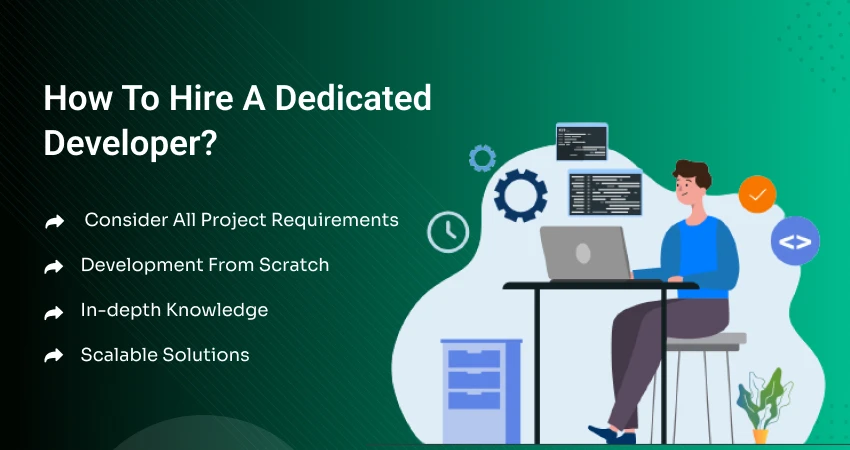
It’s true that a MERN stack developer can help you meet the development goals easily and on time. But, the question is, how to hire right.
Here’s how to hire a dedicated remote developer:
-
Consider All Project Requirements
It could be possible that you might find a developer who has a skill set you might not need at the moment. The crux here is to hire a developer who will meet all the needs, immediate and long-term, for that specific project. Their main objective should revolve around that particular project and its requirements.
So, be crystal clear from the start about the skillset you are searching for.
-
Development From Scratch
The developer you hire should have the ability to start the development process from scratch. If you hire a developer who only knows how to work on a template it would make absolutely no sense to you.
-
In-depth Knowledge
Stating again, the MERN stack developer should know all complexities and implications of the four main components of the stack. So, it’s more than just understanding the basics and other concepts.
-
Scalable Solutions
The MERN stack can be used to develop highly scalable applications or websites with better functionality. The developers you are searching for should have that skill, along with an ability t9 manage such applications.
Want to know the Cost to hire a MERN Stack Developer
Remote MERN Stack Developer Salary
One of the greatest benefits of hiring a remote MERN stack developer from a third-world country like India is you can save a lot on your expenses. The salary in India for a developer is relatively much lower than that of the US or the UK.
Here’s a tabular presentation of the salary for a remote MERN developer in different countries.
| Country | Salary |
|---|---|
| Switzerland | $106,000/year |
| Denmark | $84,000/year |
| Australia | $77,000/year |
| United Kingdom | $76,000/year |
| Netherlands | $76,000/year |
| Germany | $70,000/year |
| Norway | $65,000/year |
| Austria | $63,000/year |
| Sweden | $63,000/year |
| Ireland | $62,000/year |
| Canada | $60,000/year |
| Finland | $57,000/year |
| France | $53,000/year |
| Singapore | $46,000/year |
| Italy | $39,000/year |
| Russia | $38,000/year |
| Spain | $38,000/year |
| China | $37,000/year |
| Portugal | $20,000/year |
| Romania | $18,000/year |
| Bulgaria | $18,000/year |
| Mexico | $14,000/year |
| India | $8,000/year |
Notice how Indian developers have the lowest rates? Besides low salary demands, Indian developers also have exquisite technical and soft skills to help you meet all your objectives.
Why Hire An Indian Remote MERN Stack Developer?
Over the years, India has become the number one destination for hiring offshore remote developers for IT companies worldwide. This is because India offers a large pool of experienced, skilled and cost-effective developers. Let’s look at other reasons why companies prefer India to hire remote developers.
-
Access Top Talent
The biggest benefit of hiring remote developers is you get access to top talent from around the world. Companies choose India to hire because of its huge pool of skilled developers and engineers. These developers are knowledgeable about all the latest technologies and tools.
Most of the programmers that companies hire from India are either BCA graduates or B.Tech. In some cases, companies also offer postgraduate training in specific fields. The main reason for the abundance of skilled programmers is that almost every household in India has a programmer or engineer. It is because of this that companies have access to such a large selection of developers at very affordable prices.
-
Money & Time Saving
Hiring remote developers in India can save you a lot of time and money. This is mainly due to time zone differences. Remote developers from India can work even while you sleep. This ensures a faster development process. It also provides optimal use of time, which ultimately leads to saving money.
-
Cost-Effective Professional Developers
Hiring offshore developers from India is a very cost-effective option. This is because there is a big difference between American and Indian developers. Prices for developers in the US are around $65,000 to $1,50,000. On the other hand, prices in India are relatively lower.
Apart from this, you can also save a huge budget as you don’t have to spend on office infrastructure and equipment.
Companies around the world want to hire remote developers from India because they are very skilled and know how to work according to the industry standards of American and European countries. In addition, they are known for their high productivity, quick adaptability and flexibility.
Important Things To Consider Before Hiring Remote MERN Developer
Here are a few things to consider when you hire MERN developers in the USA from India:
-
Way of Working
Most of the workers in India use a hierarchical bottom-up employment structure. In addition, they are used to an environment where they receive clear instructions about the tasks and things that are expected of them. In India, it is pretty common for the staff of similar stations to often have a water cooler conversation.
Unlike India, America’s working style is completely different. Here, companies demonstrate a strict commitment to all professional labor relations. In the United States, employees only engage in casual conversations during breaks or after hours.
-
Working Hours
Business hours in India are usually Monday to Saturday from 10:00 AM to 6:00 PM. Some companies also offer Saturdays. However, many employees arrive late and stay late in the office to complete their assigned work.
In major IT hubs like Delhi, Mumbai, and Bangalore, traffic is a major problem that can make employees late for work. This is also the reason why there is a huge market for remote developers in these cities.
Especially when employees have a stable broadband connection, working from home becomes a luxury for them because they can better balance work and family life.
-
Time Difference
When it comes to the time difference between India and the US, India is 9.5 hours ahead of the East Coast.
-
Difference In Resumes
You must know that Indian resumes are different from American resumes. Unlike the one-page American resumes, Indian resumes are usually longer. In some cases, they can be two to three pages long.
Indian CVs include details such as career history and previous positions. Some resumes may also include personal information such as gender and race.
-
Annual Leaves
In India, employees usually get 15 days of annual leave, plus 12 days of public holidays and occasional paid leave.
Casual leave with pay also includes sick leave or absence for urgent, family or personal reasons. It is important to note that annual leave does not expire, but is carried over to the next year, although it is limited to 30 days.
Hiring Process For Remote MERN Developer on a Contract Basis
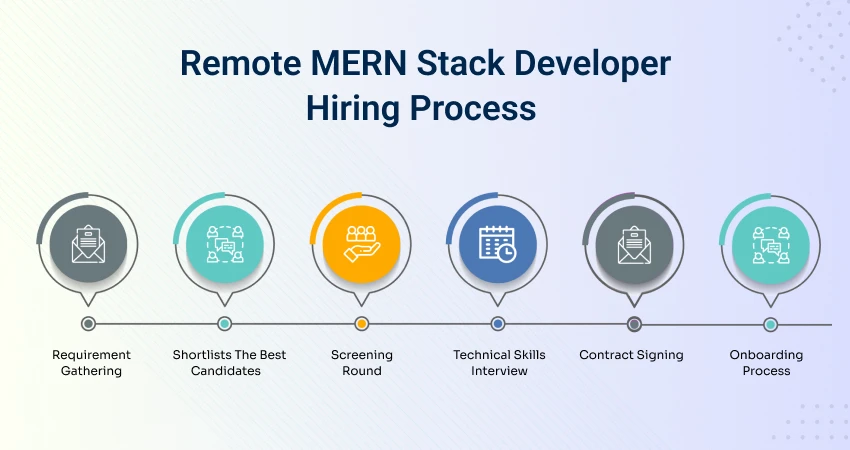
If any company wants to hire remote developers from India, they need to know the whole process. Here we cover all remote developers hiring in India in detail.
1. State Specific Requirements
Stating again, you must be specific with what you require. Here’s how you can be specific when hiring a MERN stack developer:
- A Better Job Description
It is essential to know exactly what you are looking for before you start working. You can start by creating a suitable job description.
For this, you need to mention the developer’s qualification requirements, their technology exposure and more. You should also mention any remote programming skills you want.
- Payment Specifications
When hiring a remote developer, it is very important to decide the payment frequency (hourly/daily/weekly/monthly or fixed salary).
Do not forget to mention the payment method and the day of the month to make the payment so that things are clear. Be open during business hours – also full-time or part-time.
Once you’ve planned the job details, you’re ready to contact candidates. In addition, make sure you are prepared for this change in culture.
If you already have a remote team, you know how to work with them and manage them. But if you have no previous experience, make sure you know the benefits of working with a remote developer.
2. Selection Process
Once you are ready with the specific job description, here’s what your selection process should look like:
-
Requirement Gathering
Once you are ready with the job description, post it on the socials and Indian job portals to gather all the required documents you need for the selection process. Make sure to store all the CVs and proposal letters in one place.
-
Shortlisting The Best Candidates
Take some time to select from the resumes or profiles. Then select the best 5 to 10 CVs from the others based on various criteria such as technical experience, telecommuting experience, working hours, etc.
-
Screening Round
Once you have selected the right candidate, the next step is to contact them. You can interview candidates to understand their portfolios. In addition, you will also know whether the candidate meets your expectations or not.
You can ask questions, the answers to which open up the candidate’s entire career. The candidate can also be told about their roles and responsibilities, company culture, work process, etc.
-
Technical Skill Interview
After the candidate passes the initial screening round, you can test their technical coding skills.
To do this, you can help the technical manager or in-house technical team prepare for the code test. You can also use online testing platforms like HackerRank to find the best candidates.
This round will help you test the coding skills of the candidates who will be required in an upcoming project. This test evaluates the candidate’s time management skills, problem-solving, algorithms and more, as well as coding skills.
-
Contract Signing
Once you have finalized the candidate, make sure to run background checks and take the final call by proceeding with the contract signing process. Send the selected candidates’ contracts so they can read them clearly and sign them.
3. Onboarding Process
Once you’ve hired the right candidate, the next step is to hire them. The main goal of any onboarding process is to help the new employee get to know your working environment.
You must note that the onboarding plan for a remote employee is different from that of an internal employee. Also, remote developers may take longer to get used to your company’s work culture because they don’t have access to in-person orientation.
Think about the above factors before planning the implementation process. You can also include some of the following aspects in your onboarding program:
- Software support
- Hardware support
- Personal welcome letter
- Password management and data encryption tools
- Employee handbook
- Design-based training
Why Choose India?
When considering hiring MERN developers, competitor research is crucial. Here’s why India consistently emerges as a top choice:
Established IT Hub
India has a robust IT industry, with a history of successful software development projects for global clients. It has earned its reputation as a tech-savvy nation.
Cost-Effective Solutions
Competitive pricing without compromising quality is a hallmark of Indian MERN developers, making India an attractive destination for outsourcing.
Proven Track Record
India has consistently delivered innovative and reliable solutions for a wide range of industries, including healthcare, finance, and e-commerce.
Where To Find Indian Remote MERN Stack Developers?
Your search ends here. Hire MERN stack developers in the USA with us. We are an IT staff augmentation company helping you connect with true talent and ensure you hire dedicated IT people to meet your goals in time. Contact us today to hire the best Indian MERN developer for your project.
FAQs
Q1: How do I ensure the quality of work when hiring from India?
A1: To ensure quality, thoroughly review portfolios, conduct interviews, and check references. Start with well-established platforms like Upwork.
Q2: What is the typical hourly rate for MERN developers in India?
A2: MERN developers in India can charge anywhere from $15 to $40 per hour, depending on their experience and expertise.
Q3: Are language and cultural differences a challenge when working with Indian developers?
A3: Not typically. Indian developers are known for their English proficiency and adaptability to different cultures.
Looking to hire a remote MERN Developer? Contact Us!
[quform id=”1″ name=”Contact Form Footer”]


